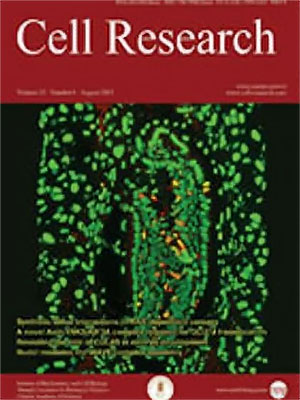Volume 6 Issue 1, June 1996: 31-38
ORIGINAL ARTICLES
Effect of osmotic shock on the redos system in plasma membrane of Dunaliella salina
CHEN SI XUE , CHI CHIONG YEN,XIN ZHI JIAO
Institute of Plant Physiology, Chinese Academy of Sciences, Shanghai 200031, China
Biology Department, East China Normal University, Shanghai 200062, China
Correspondence: XIN ZHI JIAO
The unicellular halotolerant alga Dunaliella salina had the ability to oxidize NADH and reduce Fe(CN)63-. The redox reactions were to some extent stimulated by slight hyperosomtic shock (2.0 mol/L NaCl), but markably inhibited by abtupt hyperosomotic shock(2.0 mol/L->3.5 mol/L NaCl ) and hypoosomtic shock (2.0 mol/L->1.0 mol/L NaCL; 2.0 mol/L->0.67 mol/L NaCl). With the adaptation of algal cells to osmotic shock by accumulating or degrading intracellular glycerol, the plasmalemma redox activities were also restored . The O2 uptake stimulated by NADH could be promoted by FA and SHAM. Hypoosmotic shock increase the bassl respiration rate of alga cells , but weakened the stimulating effects of NADH,FA and SHAM on O2 uptake. On the other hand , hyperosomotic shock reduced the basal respiration reate, but relatively enhanced the above effects of NADH, FA and SHAM. H+extrusion of alga cells was inhibited by NADH and stimulated by Fe(CN)63-. Vanadate and DES could inhibit H+ efflux, but had little effect in the presence of NADH and Fe(CN)63-. Both hyperand hypoosmotic shock stimulated H+ extrusion. This effect could be totally inhitited by vanadate and DES, but almost unaffected by 8-hydroxyuinoline . It was suggested that H+ ATPase probably played a more important role in H+ extrusion and osmoregulation under the conditions of osmotic shock.
FULL TEXT | PDF
Browse 2477


